THE SITE OF GRAND-HORNU
Architectural photograph is a very demanding but rewarding job, recently I visited and portrayed “Grand-Hornu” an old industrial mining complex – a remarkable reminder of the Industrial Revolution. Built between 1810 and 1830 by Henri De Gorge, a captain of industry of French origin, it is a real urban project, an example of functional town-planning unique on the European continent at the start of the great era of industrialisation.
Built in the Neo-classical style, Grand-Hornu consists of workshops, offices, a workers’ estate and the administrators’ residence, known as “De Gorge Castle”. With their arcades, pediments and half-moon windows, the colliery workshops and offices form a majestic whole.
The site of Grand-Hornu was built around two magnificent courtyards : one is huge and ellipsoidal, and the other smaller and square-shaped. There are shops, stables, building workshops, iron and copper foundries, coke furnaces and engineers’ offices, still called the “Big offices”.
The De Gorge estate adjoins the industrial complex. It was the first of its sort in Europe. First a dormitory and then a residence, it accommodated workers from various regions in some 440 houses which were remarkably comfortable for the period, each with its own garden.
The estate was later provided with a school, a library, public baths, a dance hall and a hospital. Grand-Hornu is a complex which is both exceptional and representative of an era – a grandiose project, yet not excessive in any way, where we find balance and harmony between the stylistic and functional aspects of the architecture. Grand-Hornu, which is now the property of the Province of Hainaut, is developing a contemporary project allying culture, tourism, technology and futurology.
1778 , Digging of the first coal-mining pit in Grand-Hornu
The first owner of Grand-Hornu was Charles Godonnesche.
On his death, his widow tried to sell the concern, and De Gorge immediately realised one major advantage : its situation with a particularly favourable communication network.
1880, Purchase of Grand-Hornu by Henri De Gorge
Henri De Gorge buys the mining concern of Grand-Hornu for the sum of 212,000 francs. Annual coal production is 10.000 tons, and the early days were far from easy.
1814, Digging of new mining pits
The audacious De Gorge soon starts to dig new pits, seeking bigger seams, but not without difficulty. Losses pile up and he is forced to borrow. When digging the fifth pit, Sainte-Eugénie, he comes across some particularly promising strata. It was the beginning of his success.
1816, Start of building work on the workers’ estate
To keep the workers he so greatly needed, De Gorge decides to offer them a well-being quite unknown elsewhere. He builds them a housing estate of unimaginable comfort for the period.
1827, Beginning of building of the machine-making workshop
The workshop started to work in 1831, making steam machines and the various mechanical devices needed for coal mining : pumps, ventilation, trolleys, rails, etc.
1830, Industrial tensions in Grand-Hornu
In 1830, De Gorge is faced with serious industrial tensions. His house and the industrial equipment are ransacked.
Chased by the mob of angry workers, he narrowly escapes lynching by taking refuge in one of the gazebos in the building at the colliery entrance.
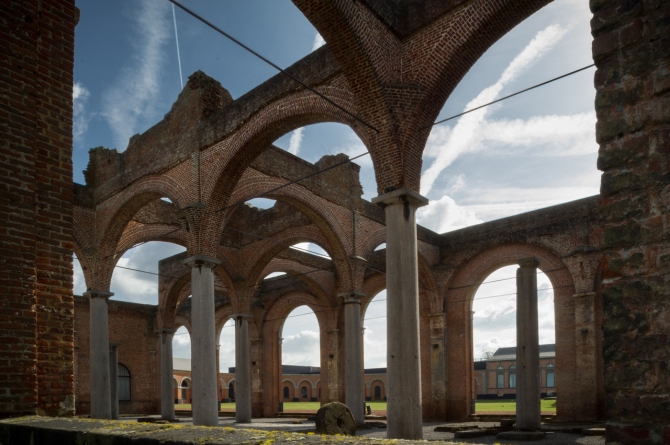 1832, Death of Henri De Gorge
1832, Death of Henri De Gorge
Henri De Gorge dies in 1832, the victim of a cholera epidemic.
The Grand-Hornu concern is highly prosperous at this time. It is producing nearly 120,000 tons a year and the colliery employs not far from 1500 people.
1843, Since 1814, 7 new pits have been dug
De Gorge gave a name to each of the pits he dug.
He gave the first one his own first name : “Saint-Henri”. Then came “The best”, “Sainte-Eugénie”, named after his wife, “Sainte-Sophie”, “Sainte-Louise”, “Sainte- Séraphine”, “Sainte-Désirée” and so on.
1855, Erection of the statue to the memory of Henri De Gorge
In 1855, Henri De Gorge’s successors built a statue in his memory. It is a work in cast iron by the sculptor Égide Mélot.
Certain elements (miners’ lamp and tools, gears) have since been lost.
1927, Building of a mausoleum
Since 1927, Henri De Gorge and about twenty members of his family have been buried in a crypt on the site, above which stands a big crucifix modelled on a work by the famous French sculptor Bouchardon.
1954, Closure of the Grand-Hornu colliery
Henri De Gorge leaves no children when he dies. His widow, Eugénie Legrand, takes over the management of the business, which she later passes on to her nephews. They form a trading company which comes to an end in 1954 with the closure of the colliery, due to measures taken by the ECSC (European Coal and Steel Community).
1968, Setting up of a committee to conserve the site
The abandoned buildings are becoming derelict.
Two university professors (Université de Mons-Hainaut), keen on industrial archaeology, Christiane Piérard and Marinette Bruwier, then set up a conservation committee.
1971, Start of restoration
The architect Henri Guchez, who is from the region, acquires Grand-Hornu and undertakes its restoration.
He sets up his architecture workshops on the site.
Following a proposal by the permanent member Claude Durieux, the Province of Hainaut purchases the site in 1989, completes the restoration and undertakes an activity based on the one hand on tourism and culture, on the other on economy and technology.
Thanks for reading.
Steve
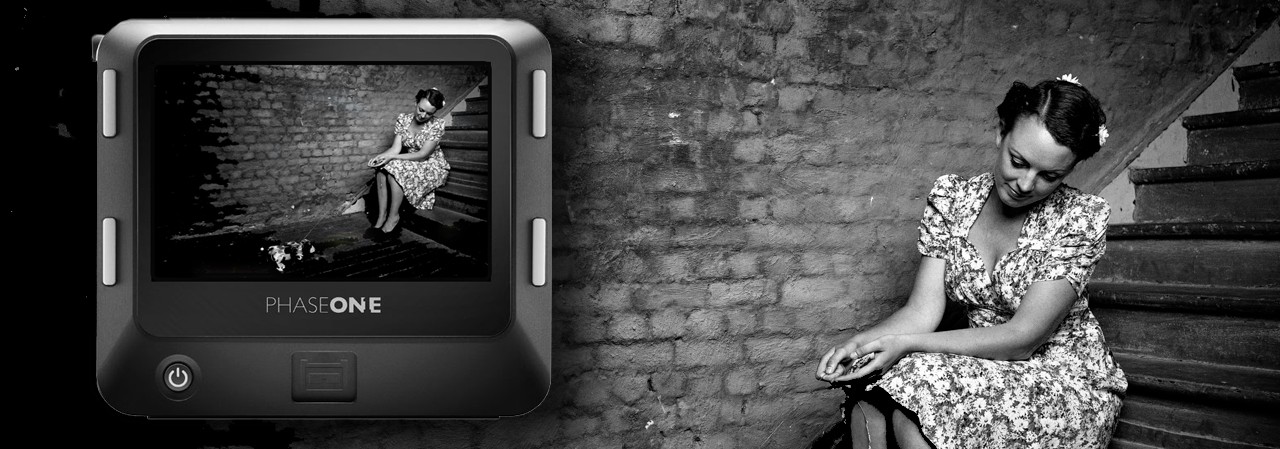
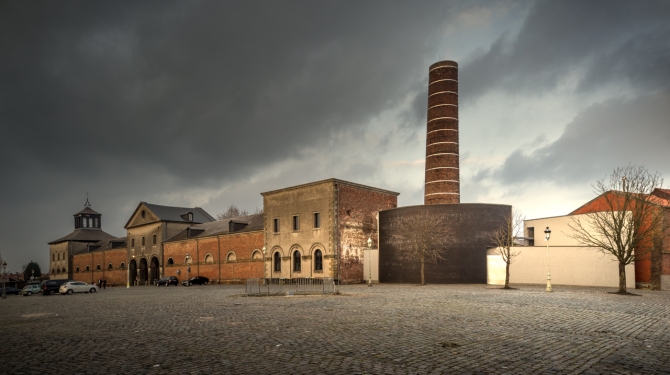
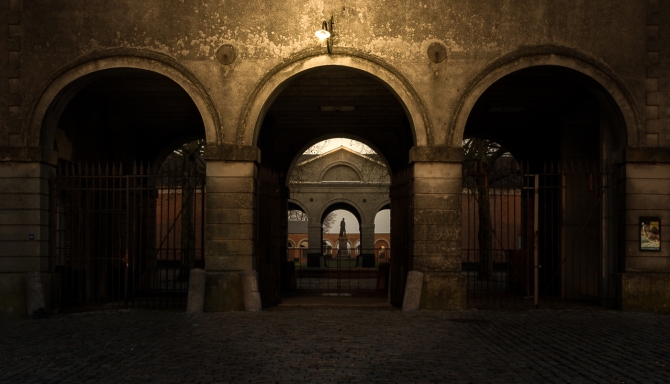
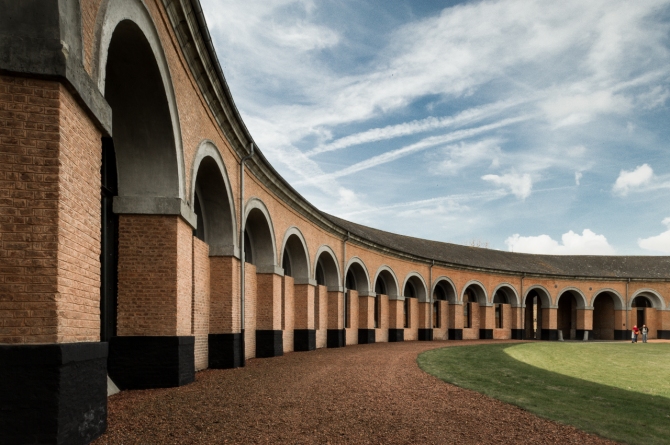
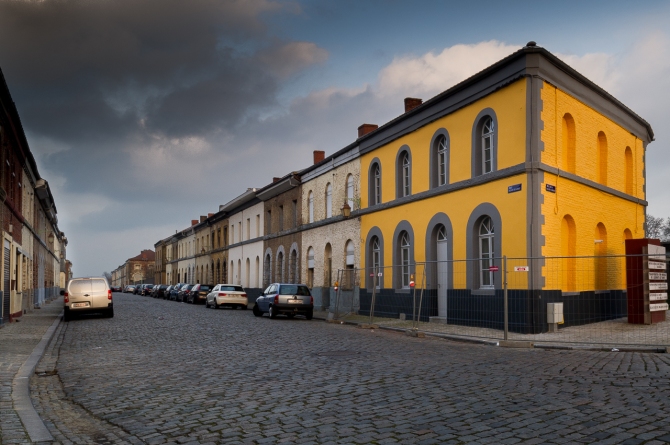
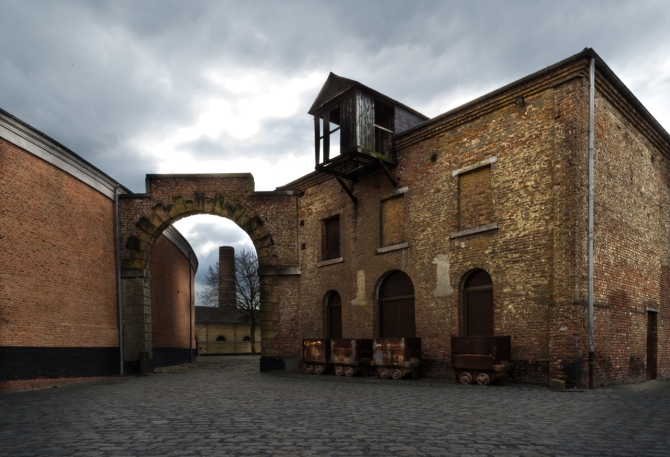
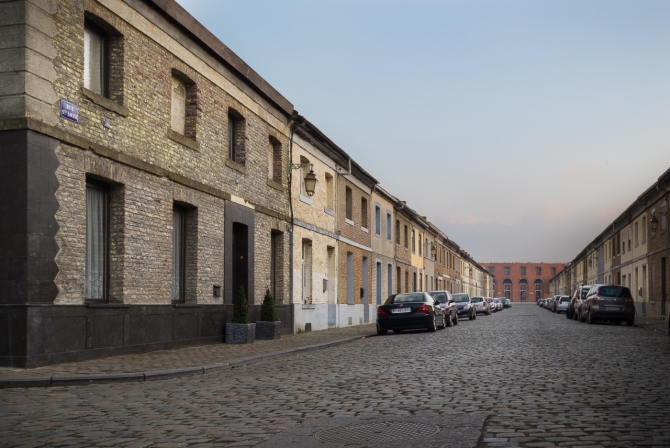
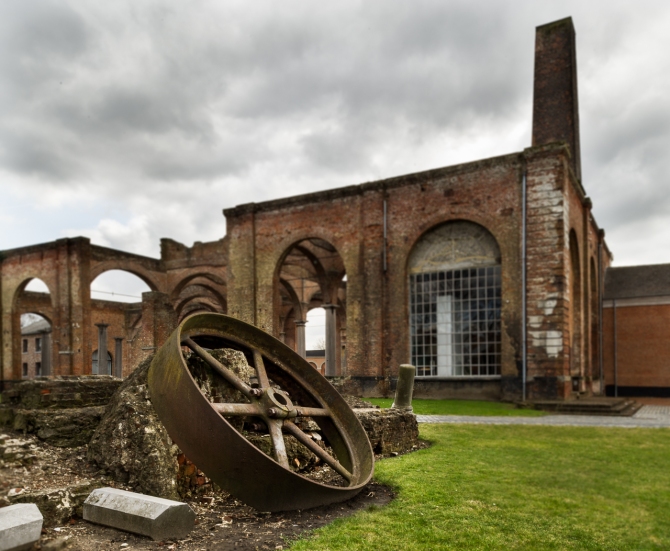
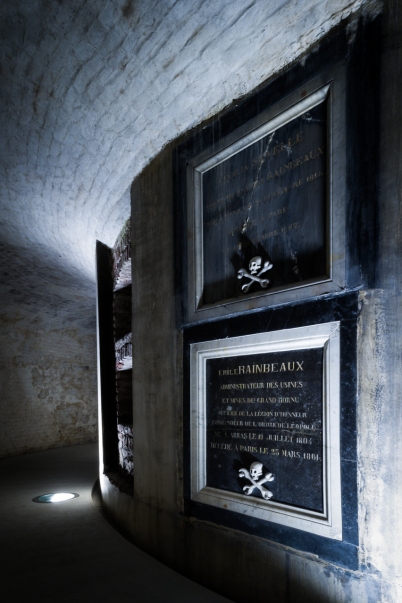
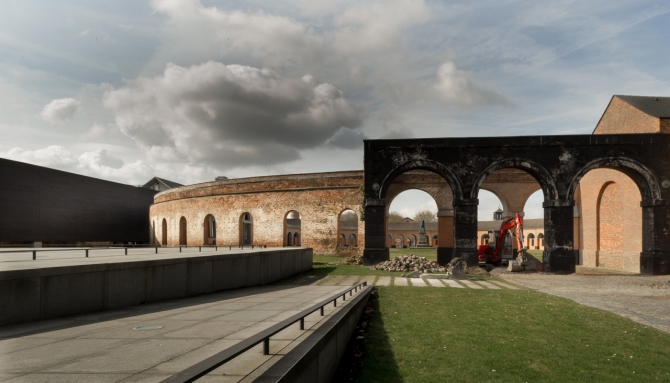
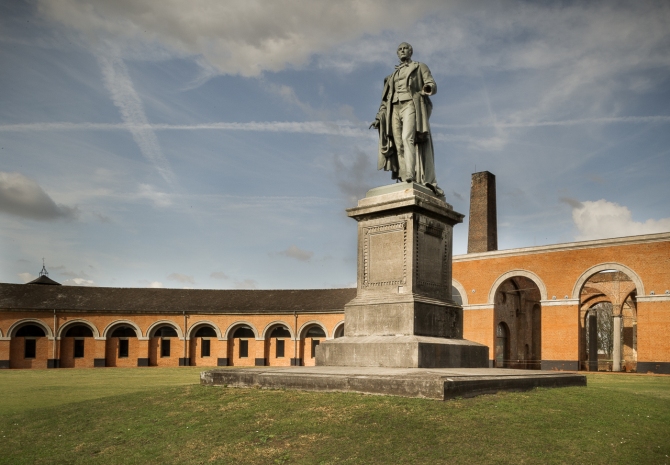
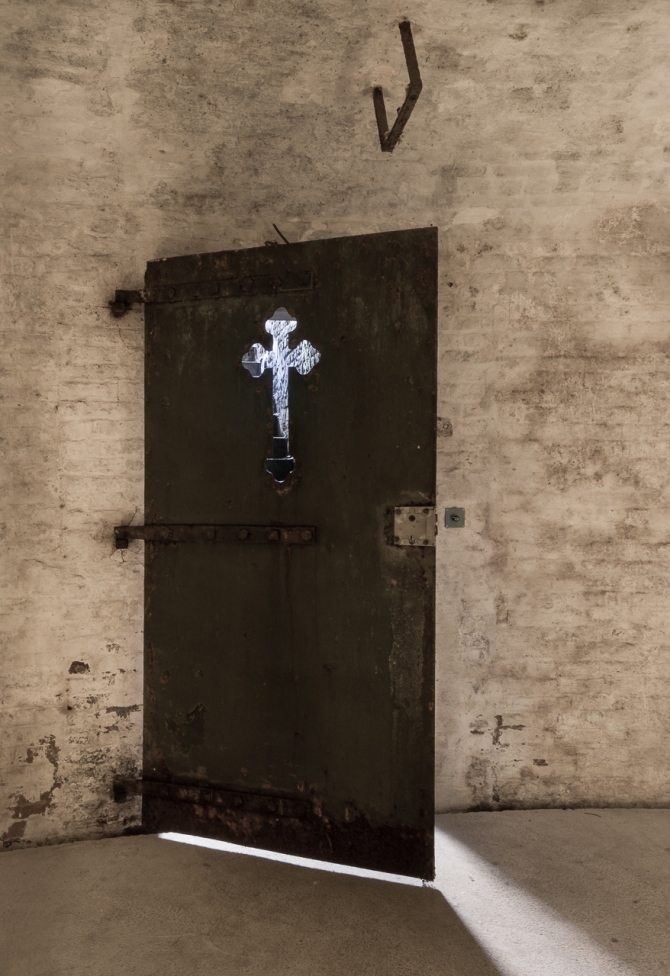
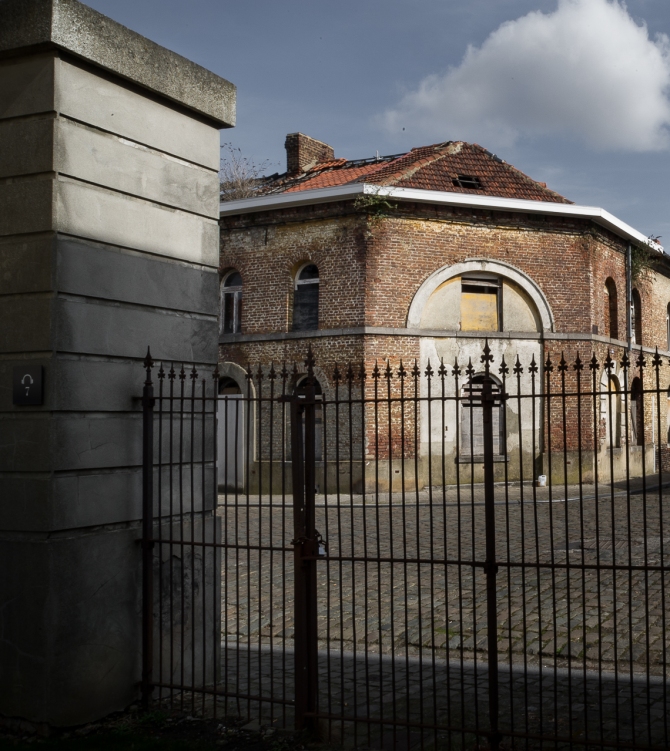
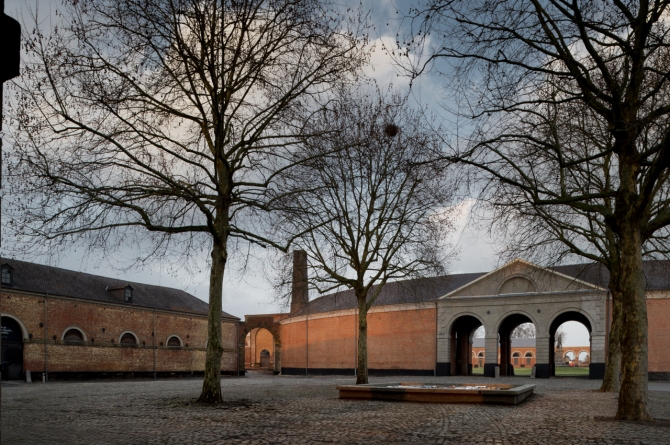
Pingback: Grand Hornu
looks so cool against the dark sky 🙂
Super inarmoftive writing; keep it up.